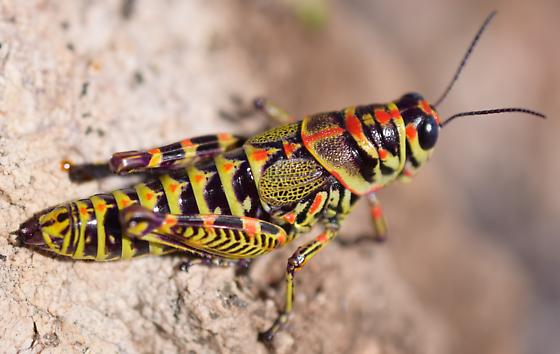The natural world never ceases to amaze, and one of its most colorful marvels is the rainbow grasshopper. Known for its vivid and multicolored exoskeleton, the rainbow grasshopper is a striking example of nature’s palette. This article explores the fascinating world of the rainbow grasshopper, from its appearance and habitat to its behavior and conservation status.
Appearance and Identification
The rainbow grasshopper, scientifically named Schistocerca cancellata, is a member of the grasshopper family. True to its name, this insect is renowned for its spectacular coloration. Depending on the individual and its developmental stage, it can display a dazzling array of hues including bright reds, oranges, yellows, greens, and blues. This vibrant coloring is not merely for show; it plays a crucial role in the grasshopper’s life.
The grasshopper’s colors serve several purposes. The bright, contrasting patterns can be a form of aposematic (warning) coloration, signaling to potential predators that the grasshopper might be toxic or unpalatable. Additionally, these colors can help the grasshopper blend into its environment when it rests among similarly colored plants or flowers.
Habitat and Distribution
Rainbow grasshoppers are typically found in a variety of environments, including grasslands, meadows, and open woodlands. They are particularly common in tropical and subtropical regions of the Americas, from the southern United States down to Central and South America. The specific habitats they prefer are often areas with abundant vegetation, which provides both food and camouflage.
During the dry season, rainbow grasshoppers may migrate in search of food and more suitable living conditions, showcasing their adaptability. Their ability to thrive in diverse environments underscores their resilience as a species.
Diet and Behavior
Like many grasshoppers, the rainbow grasshopper is primarily herbivorous. Its diet consists mostly of grasses, leaves, and other plant material. However, during periods of scarcity, they may resort to eating a wider range of plant species, which can sometimes include crops, making them a minor pest in agricultural areas.
Rainbow grasshoppers are known for their active and often solitary behavior. They are primarily diurnal, meaning they are most active during the day. Their vibrant colors become particularly striking in the sunlight, adding to their allure.
Life Cycle and Reproduction
The life cycle of the rainbow grasshopper includes three main stages: egg, nymph, and adult. The adult females lay eggs in the soil, which hatch into nymphs after a period of incubation. Nymphs resemble miniature versions of the adults but lack fully developed wings and colors. As they molt and grow, they gradually acquire their distinctive coloration and wings.
The transformation from nymph to adult is a crucial period, as the grasshopper’s colors intensify and its wings fully develop, allowing it to take on the full range of its vibrant appearance.
Conservation Status
Currently, the rainbow grasshopper does not face significant threats and is not listed as endangered. However, habitat loss and environmental changes could impact its populations in the future. Conservation efforts to preserve natural habitats and biodiversity are crucial in maintaining the health of ecosystems where the rainbow grasshopper thrives.
Cultural Significance
In various cultures, the rainbow grasshopper holds symbolic meaning. Its bright colors and striking appearance have made it a subject of fascination and admiration in art and folklore. In some indigenous cultures, it is seen as a symbol of transformation and beauty, reflecting the vibrant diversity of nature.
Conclusion
The rainbow grasshopper stands as a testament to the incredible beauty and diversity of the natural world. Its vivid colors, fascinating behaviors, and adaptability make it a remarkable example of nature’s artistry. As we continue to explore and learn more about these vibrant insects, we gain a deeper appreciation for the intricate and colorful tapestry of life on our planet. Protecting their habitats and ensuring their continued survival is essential for preserving the wondrous diversity of the world around us.
